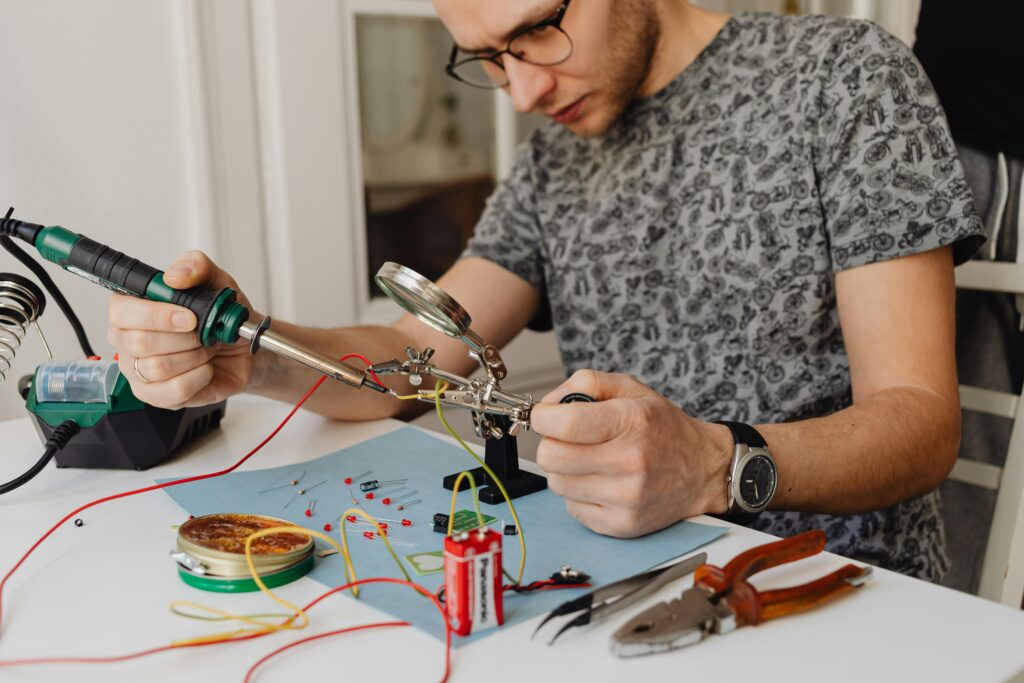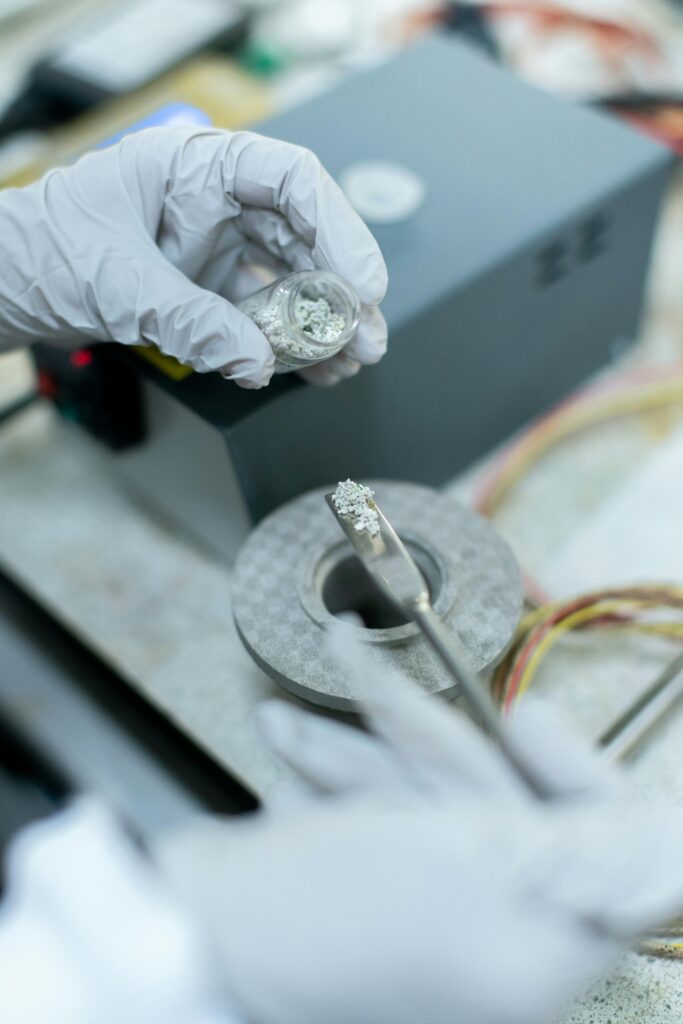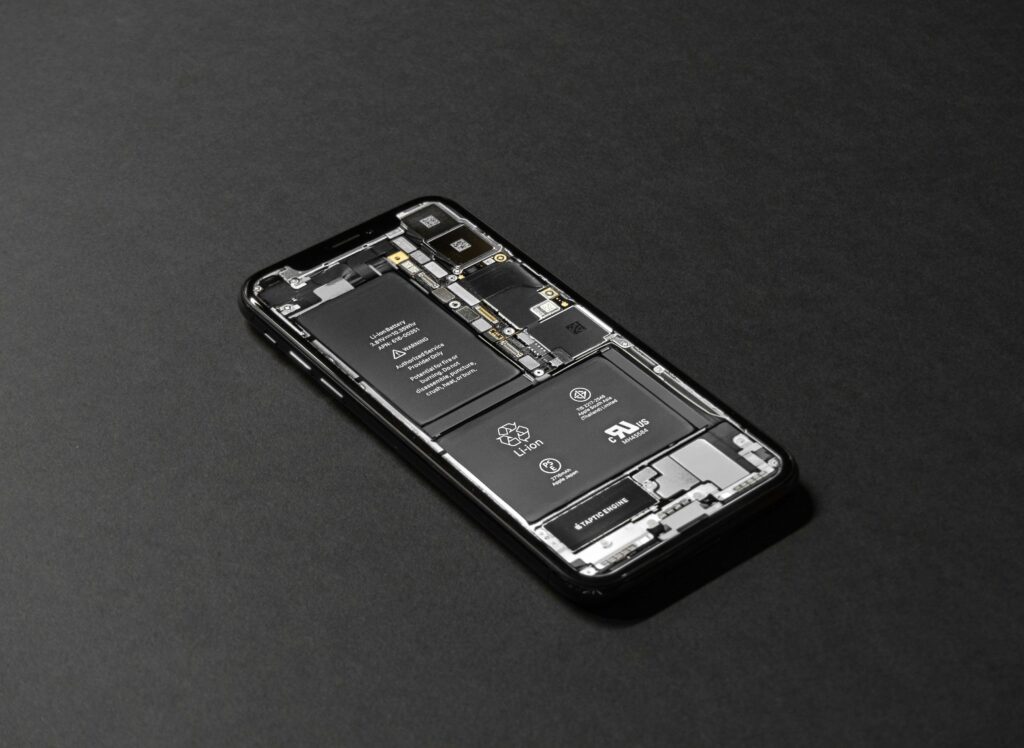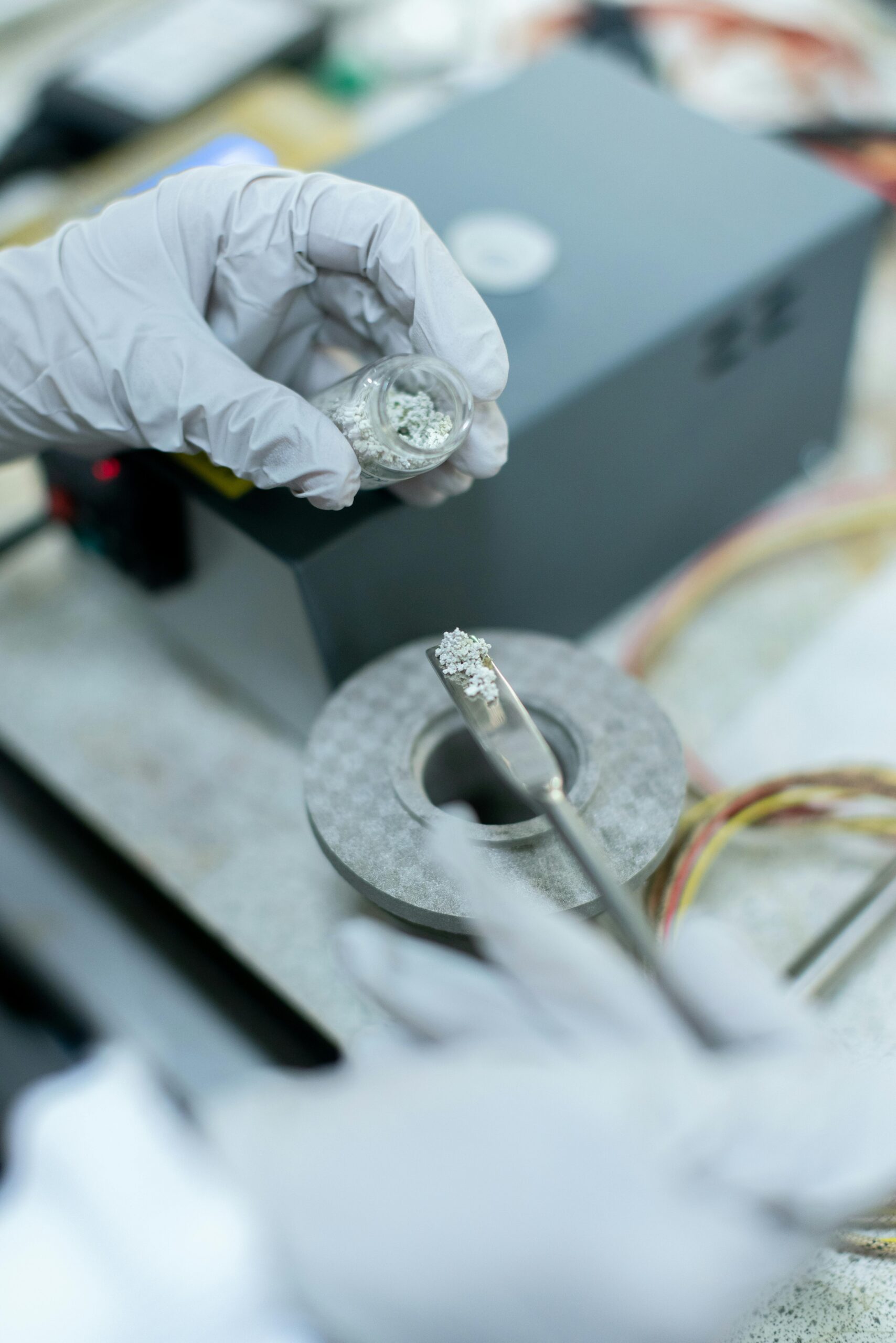Welcome to an easy-to-follow exploration of the intriguing world of lithium-ion batteries! In “How Do LFP Batteries Compare To Other Lithium-ion Batteries?” you’ll discover the unique aspects that set Lithium Iron Phosphate (LFP) batteries apart from other variants in the lithium-ion family. You’ll gain insights into their efficiency, safety, lifespan, and environmental impact. By the end, you’ll have a clear understanding of how LFP batteries stack up against their peers, empowering you to make informed decisions for your energy needs.
How Do LFP Batteries Compare To Other Lithium-ion Batteries?
Have you ever wondered how LFP batteries stack up against other lithium-ion batteries? If you’re scratching your head, you’re in good company. With so many types of batteries available, it can be tricky to understand the differences and how they affect your devices. Don’t worry; we’re here to break it all down for you!

Understanding LFP and Lithium-ion Batteries
Before diving into comparisons, it’s essential to understand what LFP and other lithium-ion batteries are.
What is an LFP Battery?
LFP stands for Lithium Iron Phosphate. These batteries use lithium iron phosphate as the cathode material. LFP batteries are known for their longevity, safety, and stable chemical makeup.
What are Other Lithium-ion Batteries?
The term “lithium-ion batteries” encompasses various types, each with unique characteristics based on their chemical composition. Some of the most common include Lithium Nickel Manganese Cobalt Oxide (NMC), Lithium Cobalt Oxide (LCO), and Lithium Nickel Cobalt Aluminum Oxide (NCA).
Quick Comparison Table
| Type of Battery | Cathode Material | Key Characteristics |
|---|---|---|
| LFP | Lithium Iron Phosphate | Long lifespan, high safety, stable chemistry |
| NMC | Lithium Nickel Manganese Cobalt Oxide | Balanced energy density and lifespan |
| LCO | Lithium Cobalt Oxide | High energy density, shorter lifespan |
| NCA | Lithium Nickel Cobalt Aluminum Oxide | High energy density, used in electric vehicles |
Longevity: How Long Do These Batteries Last?
How long a battery lasts is critical, especially if you’re investing in expensive electronics or renewable energy systems.
LFP Longevity
LFP batteries boast a longer lifespan compared to many other lithium-ion batteries. They often last between 2,000 to 3,000 cycles, and some high-quality versions can even exceed 4,000 cycles.
Other Lithium-ion Battery Longevity
Other lithium-ion batteries usually have shorter lifespans:
- NMC: Typically lasts around 1,000 to 2,000 cycles.
- LCO: Around 500 to 1,000 cycles.
- NCA: Generally lasts about 1,000 to 1,500 cycles.
Longevity Comparison Table
| Battery Type | Expected Lifespan (cycles) |
|---|---|
| LFP | 2,000 – 4,000 |
| NMC | 1,000 – 2,000 |
| LCO | 500 – 1,000 |
| NCA | 1,000 – 1,500 |
Safety: How Safe Are These Batteries?
Battery safety is paramount, especially when using products that require high levels of reliability.
Safety of LFP Batteries
LFP batteries are known for their excellent safety profile. They have a lower risk of overheating and catching fire. Their stable chemical structure makes them less likely to suffer from thermal runaway.
Safety of Other Lithium-ion Batteries
Other lithium-ion batteries have varying levels of safety:
- NMC: Generally safe but less stable compared to LFP.
- LCO: Higher risk of overheating and thermal runaway.
- NCA: Good safety profile but still more prone to thermal issues than LFP.
Safety Comparison Table
| Battery Type | Safety Level |
|---|---|
| LFP | High |
| NMC | Moderate |
| LCO | Low |
| NCA | Moderate |
Energy Density: How Much Power Can They Store?
The amount of energy a battery can store is crucial for both everyday gadgets and large-scale applications like electric vehicles (EVs).
Energy Density of LFP
LFP batteries typically offer lower energy density compared to other lithium-ion options. The energy density ranges from 90 to 120 Wh/kg (Watt-hours per kilogram).
Energy Density of Other Lithium-ion Batteries
Other lithium-ion batteries generally have higher energy densities:
- NMC: Between 150 to 200 Wh/kg.
- LCO: Around 200 to 240 Wh/kg.
- NCA: Typically ranges from 200 to 260 Wh/kg.
Energy Density Comparison Table
| Battery Type | Energy Density (Wh/kg) |
|---|---|
| LFP | 90 – 120 |
| NMC | 150 – 200 |
| LCO | 200 – 240 |
| NCA | 200 – 260 |

Cost: How Do The Prices Compare?
Cost is always a significant factor when deciding which battery is right for you.
Cost of LFP Batteries
Historically, LFP batteries have been more expensive than some other types. However, their longer lifespan and higher safety can make them a more economical choice in the long run.
Cost of Other Lithium-ion Batteries
The cost of other lithium-ion batteries varies widely:
- NMC: Generally less expensive than LFP.
- LCO: Higher cost due to the higher energy density but shorter lifespan.
- NCA: Similar cost to LCO but sometimes cheaper due to scaling in EV markets.
Cost Comparison Table
| Battery Type | Relative Cost |
|---|---|
| LFP | Moderate to High |
| NMC | Moderate |
| LCO | High |
| NCA | High |
Applications: Where Are These Batteries Used?
Different battery types are suitable for various applications. Let’s see where each excels.
Applications for LFP Batteries
LFP batteries are popular in renewable energy storage systems, electric buses, and industrial applications where safety and longevity are priorities.
Applications for Other Lithium-ion Batteries
- NMC: Commonly used in electric vehicles, power tools, and e-bikes.
- LCO: Primarily found in smartphones, laptops, and portable electronics.
- NCA: Favored in high-end electric vehicles, like those made by Tesla.
Applications Comparison Table
| Battery Type | Common Applications |
|---|---|
| LFP | Renewable energy storage, electric buses, industrial use |
| NMC | Electric vehicles, e-bikes, power tools |
| LCO | Smartphones, laptops, portable electronics |
| NCA | High-end electric vehicles |

Charging Characteristics: How Quickly Do These Batteries Charge?
Charging speed can make or break your user experience, especially for mobile and high-demand applications.
Charging Characteristics of LFP Batteries
LFP batteries can be charged relatively quickly but usually not as fast as some other lithium-ion batteries. Their stable chemistry allows for rapid charging without significant risks, making them a reliable choice for many applications.
Charging Characteristics of Other Lithium-ion Batteries
- NMC: Generally supports fast charging and is widely used in applications requiring quick recharges.
- LCO: Not as fast as NMC but still supports rapid charging to an extent.
- NCA: Typically supports fast charging, making it suitable for high-demand applications like EVs.
Charging Speed Comparison Table
| Battery Type | Charging Speed |
|---|---|
| LFP | Moderate to High |
| NMC | High |
| LCO | Moderate |
| NCA | High |
Environmental Impact: How Green Are These Batteries?
Environmental concerns are increasingly becoming a priority. So, let’s look at the ecological footprint of these batteries.
Environmental Impact of LFP Batteries
LFP batteries are often touted as the greener choice among lithium-ion batteries. They do not contain cobalt or nickel, which are associated with significant environmental and ethical issues in mining.
Environmental Impact of Other Lithium-ion Batteries
Other lithium-ion batteries have higher environmental impacts due to the materials used:
- NMC: Contains nickel and cobalt, which have negative environmental and ethical impacts.
- LCO: High cobalt content makes it less eco-friendly.
- NCA: Contains cobalt and nickel, contributing to its environmental footprint.
Environmental Impact Comparison Table
| Battery Type | Environmental Impact |
|---|---|
| LFP | Low |
| NMC | Moderate to High |
| LCO | High |
| NCA | Moderate to High |
Thermal Stability: How Stable Are These Batteries Under Heat?
Thermal stability is crucial for both safety and efficiency, particularly in high-demand applications.
Thermal Stability of LFP Batteries
LFP batteries are known for their excellent thermal stability. They can handle higher temperatures without degrading quickly, making them safer and more reliable under various conditions.
Thermal Stability of Other Lithium-ion Batteries
The thermal stability of other lithium-ion batteries varies:
- NMC: Less stable compared to LFP but generally acceptable for many applications.
- LCO: Higher risk of thermal runaway, making it less stable under high temperatures.
- NCA: Moderate thermal stability, though better than LCO.
Thermal Stability Comparison Table
| Battery Type | Thermal Stability |
|---|---|
| LFP | High |
| NMC | Moderate |
| LCO | Low |
| NCA | Moderate |
Voltage: What Are the Voltage Characteristics?
Voltage is another essential factor to consider when choosing a battery for specific applications.
Voltage of LFP Batteries
LFP batteries have a nominal voltage of around 3.2V per cell. While this is lower than other lithium-ion batteries, it doesn’t necessarily translate to lower performance; rather, it offers a more stable voltage supply over its lifespan.
Voltage of Other Lithium-ion Batteries
Other lithium-ion batteries come with different nominal voltages:
- NMC: Around 3.7V per cell.
- LCO: Approximately 3.6V to 3.7V per cell.
- NCA: Usually around 3.6V to 3.7V per cell.
Voltage Comparison Table
| Battery Type | Nominal Voltage (V) |
|---|---|
| LFP | 3.2 |
| NMC | 3.7 |
| LCO | 3.6 – 3.7 |
| NCA | 3.6 – 3.7 |
Weight Considerations: How Heavy Are These Batteries?
Weight is a crucial factor for many applications, particularly portable electronics and electric vehicles.
Weight of LFP Batteries
LFP batteries are generally heavier compared to other lithium-ion batteries due to their lower energy density. However, their weight is counterbalanced by other advantages, such as longevity and safety.
Weight of Other Lithium-ion Batteries
Other lithium-ion batteries are lighter, owing to their higher energy density:
- NMC: Moderate weight, balanced with decent energy density.
- LCO: Lighter but has a shorter lifespan.
- NCA: Typically lighter, which is why they’re popular in EVs where weight is a critical factor.
Weight Comparison Table
| Battery Type | Weight |
|---|---|
| LFP | High |
| NMC | Moderate |
| LCO | Low |
| NCA | Low |
Future Outlook: What Does the Future Hold?
The future of battery technology is ever-evolving, with each type having its own development prospects.
Future of LFP Batteries
LFP batteries are gaining popularity, especially in renewable energy storage and electric vehicles for public transport. Innovations focused on increasing their energy density could broaden their applications significantly.
Future of Other Lithium-ion Batteries
Other lithium-ion batteries continue to dominate the market, particularly in high-energy applications like EVs and portable electronics. Research is ongoing to develop more sustainable production methods and to reduce dependency on scarce materials like cobalt and nickel.
Future Outlook Comparison Table
| Battery Type | Future Prospects |
|---|---|
| LFP | Innovations in energy density, increased use in public transport and energy storage. |
| NMC | Continued dominance in balanced applications, ongoing research to reduce environmental impact. |
| LCO | Expected to remain popular in consumer electronics. |
| NCA | Continued advancement in electric vehicles, particularly high-end models. |
Conclusion: Which Battery is Best for You?
By now, you should have a detailed understanding of how LFP batteries compare to other lithium-ion batteries. Your choice will depend on what matters most to you, whether it’s longevity, safety, energy density, cost, environmental impact, thermal stability, voltage characteristics, or weight.
Key Takeaways:
- For Longevity and Safety: LFP batteries are your best bet.
- For High Energy Density: Consider LCO or NCA batteries.
- For Balanced Performance: NMC batteries offer a well-rounded option.
- For Environmental Sustainability: LFP batteries lead the pack.
- For Quick Charging: NMC and NCA batteries are ideal.
So, next time you find yourself pondering which battery to choose, you can feel confident in making an informed decision based on your specific needs. Happy battery hunting!

